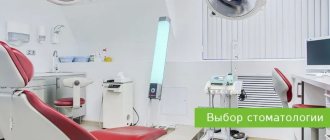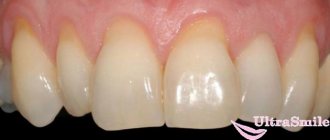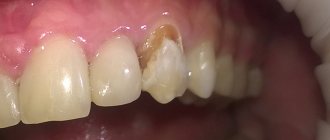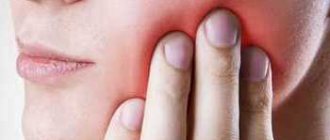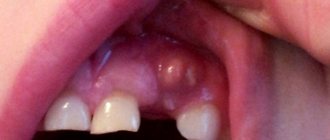First visit to the pediatric dentist - how to put your child in a positive mood
Caries is considered one of the most common dental diseases, affecting the vast majority of children. According to statistics, carious cavities occur in 80% of all children in Russia1. The first visit to the dentist is an important event, the success of which directly determines the child’s future attitude towards dental treatment. Experts in this field insist that your baby should make an appointment with a specialist immediately after the first teeth erupt. Read on in our article to learn how to prepare for this difficult test, especially if your child is afraid of the dentist.
How to arrange a child's visit to the dentist
Diagnostics
- orthopantomogram (panoramic x-ray of teeth)
- 3D orthopantomogram (three-dimensional image of teeth)
- Cone beam computed tomography (CT/CBCT) (local diagnosis of 1-2 teeth)
You can contact experienced dentists at the Family Doctor clinic. We have everything necessary for accurate diagnosis and effective dental treatment, restoration of dentition using any of the chosen methods. Rich experience, an individual approach to each patient, the availability of modern equipment and knowledge of advanced techniques - all this constitutes the gold standard for providing any type of dental care, and we strictly adhere to it. Make an appointment for a consultation and appointment with a dentist by calling the contact center in Moscow, through the online registration form and at the clinic reception.
How to prepare for your first visit
As a rule, the first teeth begin to emerge at 6-7 months - this is an excellent reason for an introductory visit to the dentist. The child’s first trip to the dentist should be of a consulting nature. First, it is better for the baby to get to know the clinic and understand that this place does not pose any danger.
On a note! Take every opportunity to contact a specialist you know or ask for recommendations from family and friends. Going to a doctor you already know will bring less stress to both the child and the parents. Today, many clinics aimed at young children come up with very beautiful interiors, and doctors work there in various costumes that will help the baby calm down and perceive the trip as something pleasant.
What to do if your child is terrified of dentists? The best solution is a calm conversation and your own example. Even at the stage of planning your first visit, ask the doctor in detail about all the procedures that are usually performed as part of the initial examination. It is worth considering your behavior in advance in case the baby completely refuses to open his mouth.
Immediately before visiting the office, you should have a conversation with the little patient about what to expect from an appointment with the doctor, as well as the importance of regular visits to the dentist (but naturally, this recommendation will be valid only if the baby understands the meaning of what was said, this usually happens by 3 -4 years).
Preparing a child for a visit to the dentist
Important! Be sure to show your baby not only to the dentist, but also to the orthodontist. After all, an incorrectly formed bite can become a serious problem on the way to the beauty of a smile, the health of permanent teeth and the condition of the entire body as a whole. In addition, treatment of defects and anomalies of the dentition at a young age is much easier and faster. It will also help to cope with functional deficiencies (improper position of the tongue in the mouth, mouth breathing), which cannot be done in adulthood.
Dental restoration
Orthopedic dentistry and implantology have wide possibilities for restoring any number of missing teeth in a row. Depending on the patient’s wishes, specialists may offer:
- installation of crowns and bridges;
- installation of single implants and conditionally removable dentures on implants;
- production and fixation of clasp dentures;
- production of complete removable nylon dentures or acrylic structures, etc.
Implantation is deservedly considered the most effective way to restore teeth. This is explained by the advantages of the method: implantation of an artificial root into the bone tissue prevents its reduction, this design is reliable and durable.
The choice of a specific prosthetic method is determined by the individual characteristics of the dental system, the wishes and financial capabilities of the patient.
Useful tips for parents
How to prepare a child for the first preventive examination at the dentist and set him up in a positive way? First, you need to talk to him and it is better if the conversation is with a family member who himself is not afraid of treatment at the dentist. So, child psychologists offer the following advice in this regard:
- try to talk about going to the dentist as an interesting event, but at the same time ordinary and completely natural,
- During the conversation, call the child's doctor by name. For example, you can say: “This is Viktor Petrovich, he wants to see what beautiful teeth you have,”
- it is better to conduct the conversation within 1-2 days maximum - this way the child will not have time to start worrying or hear enough “horror stories” from peers,
- Make an appointment in the morning so that your child does not have a reason to worry all day about the upcoming visit. In addition, young children are usually calmer in the morning,
- One parent is sufficient to accompany the child to the clinic. Bring your baby's favorite book or toy with you. While waiting, he can be distracted by reading, looking at pictures or, for example, playing a game.
Before going on a hike, it is also advisable that the child is well-rested and does not have colds or other diseases. If this happens on the day of your planned visit to a specialist, then it is better to postpone the visit until better times.
How much does a dental consultation cost?
The PROFI-Dent clinic employs experienced, competent and attentive specialists who will provide comprehensive information about the services, cost and duration of treatment.
| Moscow clinics offer different prices for dental consultations - at PROFI-Dent you can consult with a dentist-therapist for free. | |
| Consultation with a dentist-therapist | FOR FREE |
| Consultation with an orthopedic dentist | 500 rubles |
| Consultation with an orthopedic dentist (for prosthetics in our clinic) | FOR FREE |
| Consultation with a dentist-surgeon-implantologist | 500 rubles |
| Consultation with an orthodontist | 1,000 rubles |
| X-ray radiovisiography (X-ray image) | from 200 rubles |
How to behave at an appointment with a pediatric dentist
Before placing your child in the chair, give him some time to look around and get comfortable. Introduce him to the doctor and assistant, try to make the baby feel confident and safe. If he refuses to sit in a chair alone, try sitting there yourself, take the little worried man on your lap. Today, many dental centers offer children and their parents the opportunity to have a first introductory visit to meet the doctor and examine the office itself. During the first visit, the doctor usually performs the following manipulations:
- visual examination of the oral cavity, as well as assessment of the correct growth and formation of the dental system, identification of possible problems with teeth and soft tissues,
- gentle cleaning if necessary: at the first appointment, the baby can be carefully cleaned from plaque and polish the enamel,
- x-ray examination,
- detailed consultation on maintaining oral hygiene.
If the child is afraid, you can take him on your lap
“I will remember our first visit to the dentist for the rest of my life. My daughter was only 1.5 years old when I made an appointment for her. The doctor looked at the teeth and said that we need to clean them right now. Before this, my daughter was completely calm, but when she saw the instrument, she began to scream so much that the glass in the windows rattled. Fortunately, I came across a very good dentist, an old man. He so enticed her with some stories that her daughter simply opened her mouth and sat through the entire procedure. I think it is very important to choose a good pediatrician. We were just lucky, but it could have been different..."
Alina D., Nizhny Novgorod, from correspondence on a thematic forum
World experts and psychologists advise encouraging a small patient even after a standard examination. To do this, you need to prepare an inexpensive, but pleasant gift for the baby. You can even agree on this in advance with the dentist by handing over, for example, a small toy to the little hero.
As a rule, doctors working with children are excellent psychologists themselves, and they understand how important it is to praise the child after treatment. And praise and approval, as you know, are an excellent incentive to continue what you have started.
What does the dentist do during the examination?
If there are no complaints, the initial examination proceeds according to the standard plan.
Visual assessment. The doctor examines the crowns, gums, mucous membranes (inner surface of the lips, cheeks), palate, checking:
- the presence of soft plaque and hard deposits on the enamel and in the gum pockets. Tartar accumulation indicates ineffective hygiene and requires professional cleaning. It is removed to check that there are no demineralized areas or caries underneath;
- general condition of the enamel: its color, transparency, gloss, presence or absence of mechanical defects. During examination, the doctor can identify chips, wedge-shaped defects, erosion, demineralization;
- signs of gum inflammation: swelling, discoloration, thickened areas, ulcers, etc.;
- condition of the mucous membranes (assessment of symptoms of gingivitis, traces of frequent mechanical injuries, burns, irritation or inflammation);
- condition of the palate, tongue (signs of injury, plaque deposits, traces of inflammation, erosion).
The color of the enamel is assessed separately. Its changes may indicate pulpitis (becomes gray), the use of certain medications (the shade changes to yellow or pink, may require bleaching), demineralization or caries in the stage of a white or dark spot (enamel lightens, loses its gloss, and then darkens, may turn brown or almost black).
Probing. It is carried out to control the strength of the enamel and evaluate the surface of the crowns. For this, a special tool is used - a probe. Such diagnostics allows us to identify caries, determine its stage, and the degree of tooth destruction. Probing also helps to diagnose non-carious lesions: fluorosis, hypoplasia, enamel erosion. It is carried out both for healthy and already filled teeth. If the crown has been restored, using a probe you can identify secondary caries and assess the condition of the fissures on the chewing surfaces. The tool should be blunt, angular, with a notch at the end. Probing is painless: the dentist simply runs a blunt end over the surface of the crowns, assessing the smoothness or roughness of the enamel and the degree of its hardness. The same technique is used to control gum pockets. The end of the probe is inserted into the groove behind the edge of the gum on all four sides of the crown. The immersion depth of the tool should not exceed 1 mm. If it goes deeper, the gum pocket is enlarged and this may indicate periodontal disease.
Using a probe, the gaps between your own tissues and the edges of the fillings are additionally checked. If they are enlarged (there is a noticeable joint that can be felt when the instrument is passed over the crown), this may require retreatment. When probing, the doctor can detect softening of dentin under the chewing surface, deposits of tartar on the neck of the tooth, under the gingival margin.
Palpation. It is carried out to assess the condition of the periodontium and identify hidden inflammation. With this diagnosis, the tooth is moved with tweezers in different directions, assessing its movement in the alveolus and how much it can move. If even with a slight force the crown moves, this indicates inflammation and swelling of the tissue. They can occur after injury, with periodontitis, periodontal disease, and periodontitis.
Additionally, they check in which directions the crown moves (only in one, two, three, in any direction, vertically, with the possibility of rotation, scrolling around the axis). When performing palpation, the doctor evaluates the patient’s sensations (is there any pain, sensitivity, during which movement of the crown is the pain most intense). When the tooth is rocked, bloody or purulent discharge may appear; the doctor may detect swelling or compaction, and this also helps to make a diagnosis. Traditional palpation (palpation) is carried out for the gums, inner surface of the cheeks and lips, if inflammation or other pathology is suspected.
Percussion. This is tapping the crowns with a probe handle or tweezers. The movements should be light, each tooth is tapped on the sides and on the top surface. The appearance of pain with a horizontal blow may indicate periodontitis, with a vertical blow it may indicate inflammation of the nerve or pulpitis. By assessing during percussion exactly in which places, during which tapping pain appears, and how severe it is, the doctor can make a preliminary diagnosis.
In some cases, radiography may be required during the initial examination. It helps to assess the condition of bone tissue, roots, and the filling density of the root canals if the tooth has already been filled.
What you should absolutely not do
- there is no need to tell the child that the doctor will just take a look and that’s all. After all, after an examination, the doctor may decide that it is necessary to carry out cleaning or treatment. It turns out that you are deceiving, and in the future it will be very difficult to build trust. If you want to teach your child not to be afraid of the dentist, you need to be honest with him. Today it is very simple, because modern anesthetics have made dental treatment quick and completely painless, so there is no need to invent or embellish anything,
- You shouldn’t promise your child an expensive gift for going to the doctor. In this case, he may decide that he has a difficult test ahead of him, since he is so generously rewarded,
- do not say that there will be no pain or, for example, that you need to be patient. The very idea that you will have to muster up the courage to visit the dentist may not even occur to the child. But after such words she will definitely appear, and the little man will understand that during treatment he may be hurt and scared,
- do not scold the child if he does not open his mouth and refuses to obey the doctor. Screaming will not help matters, but finding an approach to a frightened baby is the task of a pediatric dentist.
An ideal first visit to the dental clinic
The task of adults is to make every effort so that the first visit to pediatric dentistry is not associated with fear and unpleasant sensations, but, on the contrary, helps to form a positive impression in the child and trust in the doctor. For this reason, our experts recommend not planning any therapeutic procedures on your first visit to the dental clinic. It is necessary to give the child the opportunity to get comfortable, get to know the doctor and assistant, and feel the friendly attitude of the staff.
It would be good if it was not just a private dentist’s office, but a specialized pediatric dentistry (children’s dental department), where there is a play corner or a playroom. The baby will spend a little time playing games, then you can be sure that he will remember a visit to the doctor as an exciting adventure.
The importance of prevention
Many mothers and fathers are subject to the mistaken opinion that it is not worth treating baby teeth at all, because their service life is very short and soon the baby teeth will be replaced by a permanent one. However, this belief is fundamentally wrong, since the formation of the rudiments of permanent teeth directly depends on the condition of temporary teeth. Caries or pulpitis in an advanced form can negatively affect the rudiments and lead to more serious dental problems in the future.
Teach children about oral hygiene
Therefore, it is extremely important to be on guard of the health of the baby’s teeth and gums from a very early age. Teach your child to perform thorough oral hygiene twice a day using a soft-bristled brush and toothpaste. For very small children, you can use special wipes or a fingertip designed to carefully remove deposits from the enamel surface. Consult your pediatric dentist about choosing an appropriate toothpaste. Make sure your baby's diet is rich in solid fruits and vegetables. Take your child to the dentist regularly for checkups.
Answering the question why children are afraid of dentists, it is worth noting that most often the parents themselves are to blame. Many adults still experience an overwhelming fear of the dental office, and excitement and anxiety are inevitably passed on to the baby. In this state, it will be very difficult to calm the child, so before going to the dentist, you should first deal with your emotions and experiences.
- According to the World Health Organization (WHO).
Diagnosis – “the patient cannot be admitted”
On Facebook I published an excerpt from my methodological development, published back in 1999. “The mentality of the dentist and the patient: aspects of psychology and ethics.” The critical section about doctors who abuse the diagnosis “the patient cannot be seen” aroused keen interest among readers.
Among the positive, there are isolated responses in the spirit of “objections”, which I comment on.
Who and why advocates the “diagnosis – patient cannot be admitted” tactic.
Andrey D.: It is not subject to admission - such a “diagnosis” has every right to exist. Even if we put aside the emotional component and the fact that instead of one problem patient a doctor can accept two or three adequate patients, the legislation now is such that it allows a doctor to be sued with impunity for a correctly diagnosed and correctly administered treatment.
Galina Sh.: A doctor also has one life, and he wants to live it with positive emotions, and not adapting to inadequate people.
Comments:
The doctors! I understand you. Indeed, it would be nice to deal with patients who immediately agree to everything. Indeed, a doctor is also a person and “wants to live with positive emotions.” But let's look at this topic from different angles.
I have never stated anywhere that a doctor has no grounds for refusing a patient planned treatment.
Everyone knows that the patient has the right to choose a doctor. To this axiom I always add: “with the consent of the doctor,” which is indicated in regulatory sources. I present them in a package of documents accompanying patients from “entrance” to “exit” in order to exclude far-fetched discussions about the Hippocratic Oath and medical duty.
The task is not to overuse the “cannot be accepted” diagnosis, not to make unfounded conclusions about the patient’s mental status and, most importantly, to learn to overcome conflicts with service recipients by mastering appropriate techniques, including ways to adapt to the patient’s individuality.
The principle of an individual approach in medicine has not been canceled, and it applies not only to the purely medical aspects of a doctor’s activity, but also to the psychological ones.
Why do you need to “adjust” to the patient?
Adjusting to the patient is a way of entering into the system of his perception of the clinical situation and the doctor’s personality in order to select adequate means of achieving the goals of psychological influence.
When providing paid services, it has a voluminous content and is of great importance in the activities of a doctor of any specialization. For the sake of the effectiveness of his work, a psychologically prepared dentist must “adapt” to the patient, taking into account his various characteristics:
- thinking - the patient thinks quickly or slowly, immediately understands the doctor’s intentions or after a detailed explanation, which obliges the doctor to think logically and control the clarity of the presentation of his own thoughts;
- awareness of one’s own dental problem - the patient sees it superficially or essentially, in combination or without taking into account various clinical circumstances, which requires the doctor to be able to provide arguments to prove his conclusions and recommendations;
- emotional experience of his problem - the patient is adequately concerned about what is happening in the oral cavity, or is overly worried, and then the doctor needs to help the patient overcome fear, fear, or does not appreciate the seriousness of the situation, and in this case the doctor needs to make efforts to increase the level of his concerns;
- specifics of the operation of sensory channels - the patient primarily perceives information through vision, hearing or sensations, and then the doctor chooses the most effective way to illustrate the situation that has arisen and access to his consciousness;
- dental experience - it can be positive, undecided or negative, and then it must be neutralized before offering the most effective treatment option;
- extraversion and introversion, i.e. sociability or isolation, which encourages the doctor to communicate with the patient more or less and to patiently perceive both the person who likes to talk and the person from whom he has to “pull” information;
- the patient’s ignorance of dental terms – which requires the doctor to be able to express himself in understandable language.
We cover the methods of “adjustment” in Volume III “Doctor and Recipient” and individual articles in my FB group.
“Adaptation to the patient” is the most important indicator of a dentist’s professionalism.
Why does mastering “tuning” techniques irritate some colleagues? Why are the shortcomings of education publicly elevated to the rank of a professional position?
The reason is obvious: the desire to work less and earn more. Isn’t this what the opponent mentioned above states: “instead of one problem patient, a doctor can accept two or three adequate patients”?
Why “inadequate” people concentrated in paid dentistry.
I will name three main reasons.
Reason one. The authority of dentists among the majority of patients is low.
Let's be honest. The foundation of mistrust was laid:
- “Soviet” clinic, which eliminated the urgent problems of patients in a strictly allotted time. – Hence the desire of private dentists to minimize consultation time, provide treatment faster and receive payment;
- University training of specialists, which still focuses graduates on the treatment of dental diseases and does not teach skills to work in market conditions. – Hence the reluctance of many dentists to engage in sales (presentation) of services, explaining the essence of different treatment options;
- Lack of interaction with the modern recipient of services in university psychology programs. – Hence the attitude of graduates to limit their communication with common sense and the reluctance to improve in this regard of their skills (I judge this from the experience of conducting psychology classes with residents at SPbINSTOM: they listen with great interest, but I observe a desire to take knowledge and recommendations for practical work from few, the most inquisitive and concerned about working in a commercial environment).
Such a pronounced problem of tense relations between patients and doctors does not exist in other areas of medicine, for example, in cardiology and neurosurgery. Here the authority of specialists is high, trust in them is unconditional, and the problem of “inadequacies” does not arise.
Recipe for dentists: you need to learn to gain trust points in direct interaction “here and now” with each patient, overcoming his probable or manifest doubt in your professionalism and honesty.
This must be done from the moment the patient appears at the initial consultation and at all subsequent stages of communication, including contacts after payment for services - compliance with guarantees, invitation to a follow-up examination, conducting clinical examinations (in justified cases), responding to the patient’s reported discomfort and complaints.
When I begin the training seminar “The result of a consultation is trust in the dentist,” I emphasize: follow the recommendations that I have formulated over almost twenty-five years of work in private dentistry, and then within 30-40 minutes you will be able to dramatically change the way you see yourself as a dentist, make a lasting impression on the recipient of the service.
The unique scenario I developed, “ Algorithm for effective consultation and subsequent techniques: aspects of marketing, psychology, legal and professional protection,” also meets these goals. This is a kind of score for a thoughtful specialist; it leads to success. Here are the guidelines that should guide a dentist who expects to make good money, scenarios for personal medical services and “access keys” to the identity of the recipient of services. This knowledge is built into the stages of the consultation, as a result the patient will see that you are a professional with a capital P.
It is clear that in order to successfully master the material, you need to work hard: read every line of the notes, understand, accept, assimilate, remember new things and gradually incorporate them into everyday activities, overcoming outdated stereotypes.
The habit of learning something, doing something somehow, the conceit of “I know this”, “I do it this way” - all these “arguments” for not working on yourself do not lead to the desired results of professional growth. Applied psychology is a complex subject of knowledge.
Reason two. The cost of dental services is high given the economic situation of most visitors to commercial clinics.
Whatever clinic the patient chooses - very advanced, average or modest - the services seem expensive for him compared to his income. This fact is a kind of catalyst for patients’ critical perception of the work of dentists: treatment is expensive, and the attitude of the staff leaves much to be desired. In many foreign countries, dental treatment is not cheap, but this is perceived more calmly against the backdrop of the financial well-being of most patients.
Prescriptions for dentists:
- don't inflate the price
- do not resort to overdiagnosis of the clinical picture,
- try through your personal efforts to prove “here and now” that the high prices for your services are justified,
- in agreement with the management, give discounts when patients pay for expensive treatment - this is an objective principle of providing paid services, and there is no need to resist it,
- do not strive for immediate gain - this turns patients away from you and encourages you to lash out at you the evil that appears in conditions of financial shortage.
When the patient understands that he is dealing with a good and honest professional, he can more easily overcome the feeling that your services are expensive!
Reason three. Private dentistry lags significantly behind the rapidly increasing consumer competence of the recipient of services.
Private clinics have advanced materials and treatment methods; doctors post certificates of completion of seminars and trainings to improve their professional skills on the walls of their hallways. Clinic websites are designed in the spirit of “we have the best” and state: we have been on the service market for 15-25 years, we have a team of highly qualified specialists, we have advanced technologies and materials, doctors are constantly improving their professional level.
In such manifestations of competitive advantages there are more ambitions than real achievements, as work with some clinics convinces. But, let’s say, the doctors of your clinic have reason to be proud of their achievements, they are fluent in techniques, follow protocols and standards of treatment.
However, all this is implicit, i.e. indicators of their skill internally experienced by doctors. The patient does not see all this; he judges the dentist’s skill by obvious (materialized “here and now”) and understandable criteria of professionalism, i.e. according to explicit signs.
In my experience in dentistry, many dentists fail to translate implicit evidence of their skill into explicit, here-and-now evidence for the individual patient.
Many dentists are convinced that the patient himself will easily and simply see and highly appreciate their skill; it seems to them that the word “doctor” has a special magic. This is wrong. One must learn to prove one’s professional level “here and now” in front of the patient, but doctors resist the new and stubbornly strive to pursue a career guided by simplified knowledge and outdated stereotypes of professional behavior.
A prescription for dentists: it’s time to understand that a doctor in a private clinic deals not only with the patient, i.e. recipient of dental care, but at the same time with the consumer of services, i.e. client.
Consumer of services (from Latin client) – client. This definition still shocks many doctors who claim that they treat, not provide services, and do not sell. This is evidence of not only the psychological, but also the legal backwardness of dentists.
The fact is that at the level of legislative acts it is recognized: “paid medical services to the population are provided by medical institutions within the framework of contracts with citizens or organizations.” To such agreements, as follows from paragraph 2 of Art. 779 of the Civil Code of the Russian Federation, the rules of Chapter 39 “Paid provision of services” of the Civil Code of the Russian Federation apply.
It turns out: with one hand, some dentists declare that they treat, and do not provide services, and with the other hand they want to earn more. This is a manifestation of cognitive dissonance, i.e. inconsistency in the brain of individual knowledge and ideas. Cognitive dissonance must be overcome, and not smoothed out through self-deception.
A recipe for dentists: in each patient (recipient of dental care) one must at the same time see the consumer of services (client).
Instead, many dentists follow a traditional style of communicating with recipients of care. This is a paternalistic style of interaction (from the Latin paternus - fatherly, fatherly): “I say, listen, follow my instructions, accept my decisions without objection.” This style is somewhat suitable for a doctor whom patients trust unconditionally.
However, the modern recipient of dental services has assumed the role of a client; he does not accept a paternalistic style of communication; he wants to hear from the doctor the rationale for the conclusions about the diagnosis, the proposed treatment options, costs, and guarantees. And dentists don’t like this kind of patient, he irritates him and makes him angry. He is a client, and behaves reasonably, but, according to another dentist, he is considered “inadequate.”
Why does a discerning client doubt the cost of services and the professionalism of doctors?
A client comes to receive medical services and is convinced that the level of his consumer competence is not taken into account:
- the prices are high, but I don’t understand how they are justified,
- most doctors in different clinics are practically not much different, they are equally likely - they are not trained in the technology of “gaining trust points” and showing competitive advantages,
- the manner of communication between staff and patients is reminiscent of a “soviet” clinic,
- guarantees are either not given (this refutes the principle of an individual approach), or the Contracts already stipulate a year of guarantees for all types of services (this contradicts the individual approach and goes against the law of the Russian Federation “On the Protection of Consumer Rights”, in accordance with which it is necessary to determine the warranty period and service life, although this is not consistent with medical canons, but for now there is no other choice - judges are guided by the law),
- recommended treatment plans are not drawn up (usually they are identified with the plans being implemented, and it is not clear to patients what and when to treat, following the instructions of the paternalist),
- health questionnaire data is not discussed with the patient (the doctor barely glanced at the questionnaire and put it aside, and in many clinics it does not meet quality criteria),
- the patient tries to say that he has already had a consultation with another dentist, and the doctor replies: “I’m not interested in this, I will see for myself what and how to treat you” (the doctor does not understand the logic of market relations: after hearing a second opinion, the patient will go to a third clinic to understand what he needs to treat and which option to prefer),
- the purpose of informed voluntary consent is not explained (therefore often creating the impression that the doctor is not responsible for the quality of treatment),
- consultations are not held, but are replaced by patient sendings from one specialist to another (often their recommendations are not agreed upon, which is revealed by borate communication with patients after treatment and when analyzing cases of defects in work),
- the agreement for providing the patient with obligations to the clinic (it does not represent the interests of the patient and does not anticipate the complex nuances of interaction with the doctor, which is achieved in the agreement, which is developed according to the vector principle),
- supporting documents are drawn up carelessly (small font, lack of paragraphs, poor logic, grammatical errors).
Everything indicates that the clinic does not take into account the mindset of the discerning client. To overcome this shortcoming in the work of staff, we have developed a package of documents accompanying patients from “entrance” to “exit”.
If the clinic lags behind the consumer competence of the modern recipient of services, he defends his interests, demonstrating disagreement with the paternalistic doctor, rejection of his logic and style of communication.
I give an example from reviews of my publications about the mentality of the dentist and the patient.
Elena D.: The patient is always right. But I’ll tell you, a doctor must know his worth and respect himself. I had a patient who was ten years old. I came with a request to file a tooth that was broken down to the gum area. She spent ten minutes explaining that a photograph was needed, that the roots were already like a rotten stump, that it needed to be removed. Bottom line: “Well, you know, I’m going to Jordan tomorrow, there are super doctors there, they will grow.” But I should have immediately told my aunt goodbye, and not taken up my time.
A comment.
Dear Elena! You noted that 10 years have passed, and you remember a patient who did not agree with your professional conclusion. You can imagine the irritation with which you interacted with the “aunt” who was taking up your time. But let me ask:
Before announcing your decision to remove a tooth, did you manage to gain “trust points” in yourself as a specialist? Or did you work according to the “three-step treatment” scheme: 1) tell me what’s bothering you, 2) get treatment as recommended, 3) pay the money and leave?
Have you discussed the state of her physical health with the patient, showing concern for her and your professional level?
Have you examined the entire mouth and created a recommended treatment plan to demonstrate concern for the patient's dental health, perhaps overcoming her resistance to your intention?
Have you explained to the patient that you understand her desire to keep a tooth that doesn’t hurt?
Have you stated your professional principle: always do everything possible to preserve each tooth and decide to remove it if there are obvious prerequisites?
Have you presented the entire set of arguments proving that tooth extraction in this situation is a reasonable conclusion?
Have you discussed with the patient other possible options for restoring the tooth other than removing it?
Did you realize that by not taking a picture, you are causing the patient to doubt the validity of her decision to remove a tooth that does not hurt?
Having realized that the patient was resisting your conclusion, did you invite a colleague to reinforce your decision?
Did you talk about the prognosis for the effectiveness of tooth restoration and guarantees if it is preserved at the patient’s insistence?
Have you explained what needs to be done next if the tooth is removed?
Have you guessed that the patient resists tooth extraction also because she sees the difficulties and costs of eliminating a new dentition defect?
Have you tried to explain to the patient that in Jordan the doctor will either avoid the question of guarantees or make big promises, realizing that she will be far beyond the reach of his office?
General conclusion: most likely, you, Elena, have exemplarily implemented the paternalistic style of communication: “I am a doctor, do what I recommend. If you don’t want to, see you, I don’t want to waste time on you. Who is next?"
Why does another doctor limit his skills to manual skills?
Elena, you are not alone in your strong paternalistic beliefs. In support of you, I quote another review in which the “diagnosis cannot be accepted” is defended:
Dina Sh.: I’m not mistaken, firstly (personal experience), and secondly, the threat of losing a good doctor because of your…s can be effective. I simply tell such a patient harshly that I have no time to study psychology, I’m treating teeth, either you stop or we break up.
A comment.
To the position of “tough and good” according to the self-assessment of the mentioned doctor, I quote A.P. Chekhov:
Do you think that just because you learned how to pull teeth, you can be useful to society? Well, no, brother, you won’t go far with such narrow views... No, no, under no circumstances.
Further, I note: the order to the patient “stop” (a variant of the so-called strong irritant in educational psychology) can be used in exceptional and justified cases. However, it should not be used as the main method of influencing an “inadequate” patient. A commanding tone can both make the patient calm down and cause an explosive self-defense reaction.
Anything that works as a stereotype is not acceptable in the practice of a professional. The more variable and flexible a doctor’s behavior is, the better he takes into account the individual characteristics of patients, the longer the queue for an appointment with him.
Let’s imagine, however, that Dina is a really good dentist and doesn’t overestimate herself and knows how to explicitly prove her skills “here and now.” And what do her patients convey via word of mouth? What would be the feedback from patients who completed treatment if it were carried out correctly in the clinic?
Patient opinions may vary:
“Dina Sh. treats well and is a wonderful person”, “the doctor is good, but tough, categorical, I treat with her out of habit”, “the doctor is good, but I didn’t like the style of communication with me, I won’t go to her again.”
Think, Diana, about the likely reviews of your work. Discard the opinions of manipulators who flatter you in order to get discounts or guarantee good results from the treatment.
Dina, judging by the tone of your objections and judgments addressed to patients, I dare to believe: you are a categorical person, not inclined to reflect on your behavior in order to correct it, and you reproduce negative mental energy. All of this taken together prevents you from forming a therapeutic alliance with your patients and leads you to burnout. Change your mental hygiene regime. Do this for the benefit of yourself and your relationships with your patients.
Why do supporters of the “cannot be accepted” diagnosis display accusatory tendencies?
Many dentists do not see their fault and the root cause in tense relationships with patients: it is the patient who is “inadequate”, it is he who “gets on your nerves”, he who “will blow your mind”...
And doctors can understand this: our self-awareness stands guard over our Self: admitting to ourselves the lack of knowledge and skills is unpleasant, it destroys the personality, so people do not want to hear criticism addressed to them, they resist self-criticism. Self-consciousness plays the role of a clown who fools us: “I am good and correct,” “I know this,” “I do this.”
Everyone wears a mask and even seems to themselves to be what they want to be, and not what they really are. Lion Feuchtwanger.
However, ask yourself: on what basis did I diagnose someone as an “inadequate patient”? This patient is subjectively “difficult”, in the sense that I did not find an approach to him, because I do not know the typology of patients, I do not know the techniques of “contrast”, “joining”, “compliance”, “dialogue”, “rational overcoming” conflicts"? Maybe it’s my “problems”: I’m impatient, I have reduced communication tolerance, there are signs of emotional burnout, I’m a sensory distrustful type, I have incongruent expression, negative mental energy emanates from me?
I’m afraid, ladies and gentlemen, many of you have not heard about these and other communication barriers, are not concerned with creating your own psychohygienic image, and therefore provoke defensive reactions in your patients by declaring them “inadequate.”
Or is this an objectively “difficult” person with whom it will be difficult for any doctor to establish contacts, since there are some deviations from the mental norm? Are you aware of these deviations? Do you know how to take them into account?
In October 2021, a scientific and practical conference “Modern methods of diagnosis, treatment and prevention of dental diseases” was held in Moscow (I was the chairman). One speaker mentioned inadequate patients, and a question from the audience: “How can we establish an exchange of lists of such patients so as not to admit them to clinics?” (the same proposal was made on Facebook).
This is what “advanced” dentistry has come to! – Doctors are ready for denunciation, instead of increasing their psychological potential.
I had to categorically object to those who want to exchange lists of unwanted clients. This is illegal and immoral, given the subjectivity of the diagnosis “cannot be accepted.”
As an argument, I voiced to the conference participants the epithets I had accumulated that doctors and administrators used in medical records. The softest ones are SB, which means a complex patient, SVB is a bitch in bots, MD is a fool's mother, I omit other definitions (there are about 30 of them) here - they are indecent. One can imagine how quickly the lists of “inadequate” patients will grow if dentists begin to compile them and send them to clinics in their regions.
Why, when mentioning “inadequate” patients, does no one ask how to learn to work with them?
How to get out of conflict situations, how to promptly recognize clients with whom tense relationships may arise, what measures to take at different stages of interaction to protect doctors and the clinic?
I have repeatedly spoken on this topic in the books “Does a Patient Choose a Dentist?”, “Doctor, Child, Parent”, “Physical Discomfort at a Dental Appointment”, etc.
Why don't dentists ask the experience of colleagues who find ways to form a therapeutic alliance with the majority of patients (not with all, of course).
I quote another review of my publication in the spirit of “objections”: “That good doctor Aibolit from the St. Petersburg clinic, who sees everyone indiscriminately, is either a fictional character or has never been subject to proceedings, where the main criterion for assessing the quality of treatment is the postulate “client always right". So until the legislation changes, doctors are forced to protect themselves and each other. And the methods of denying treatment to patients will only improve.”
A comment.
As you can see, the same topic of “not accepted” is being discussed. But where did the opponent get the statement that “the main criterion for assessing the quality of treatment is the postulate “the client is always right”? Why is a talented colleague declared a fictional character who undertakes to treat everyone? What changes does the opponent expect in the legislation that will supposedly relieve him of responsibility for the tactics of communication with service recipients? And how will “methods of refusing treatment to patients” be improved?
Recipes for dentists:
- Open your mind to the knowledge and understanding of the patient as a client who is ahead of you in the demands placed on your professionalism.
- Learn to rejoice in the fact that an “inadequate”, at first glance, recipient of services under your influence received a high-quality service and overcame doubts about your professional training.
Advanced dentists understand how important it is to help even a “difficult” patient. Here is the opinion of a smart doctor from responses to the publication:
“But if you conquer an “inadequate”, then he is yours forever and quite quickly becomes more loyal. It’s difficult for him too, no one will take him.”
Why are routine inspections important?
Even though your child's baby teeth will fall out in the future, their development is very important to your child's oral health and overall well-being. To keep your gums healthy and your molars to grow properly, you need to take care of your baby teeth. The pediatric dentist checks the condition of the child’s gums and makes the necessary recommendations. Your dentist may also know how much fluoride is in the tap water in your area, so if necessary, he or she can recommend fluoride varnish or nutritional supplements to help prevent fluoride deficiency and promote normal tooth and tooth enamel growth and development.
The sooner you and your child start visiting the dentist regularly, the sooner your child will get used to it and understand that good dental care is important for later life.
